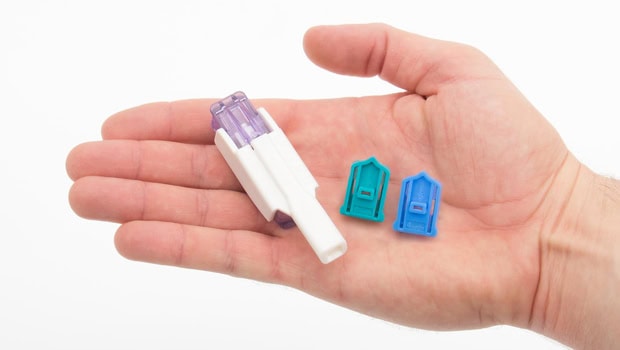How Sanofi Plans to Sell Us Inhalable Insulin

Stefan Schwarz has been given a marketing challenge: to help us embrace a novel way that insulin can be delivered. Schwarz leads the Sanofi marketing team in charge of rolling out Afrezza, the new inhalable insulin system developed by Mannkind. His task is made all the more challenging because the last time inhalable insulin was unleashed on the marketplace, it failed miserably. Pfizer lost $2.8 billion with its inhalable insulin product, Exubera, in 2006.
Schwarz, however, is quick to point out ways in which the Afrezza to Exubera comparison is akin to apples and oranges. First off, Afrezza’s insulin is more quick-acting than the insulin used in Exubera; it peaks in 12 to 15 minutes and is designed to be out of your system in 3 hours, he says. Afrezza has also been designed to be much sleeker in design than Exubera, which came too close to resembling a bong. In addition, the Afrezza inhaler is small enough to fit into the palm of your hand, works with ready-to-use cartridges, and doesn’t require cleaning or maintenance.
“It was designed with the patient in mind,” he says.
In June 2014, after several years of trying, Mannkind received FDA approval for Afrezza for adults with Type 1 and Type 2 diabetes. Mannkind then turned to Sanofi for marketing muscle later that year. Sanofi has already begun the marketing campaign to debut Afrezza to the U.S. market, creating a website and prepping a sales force to reach out to doctors.
The first sales pitch Sanofi will employ is to focus on how Afrezza might meet the unmet needs in the diabetes community. Inhalable insulin might prove invaluable for dealing with needle phobia, especially for those with Type 2 diabetes who are delaying initiation of insulin therapy.
“Many of those patients are resisting or delaying the initiation of insulin for five or more years,” Schwarz says.
Also, Afrezza might help those needing to ramp up insulin therapy who are currently in the closet about their diabetes.
“It is a big step to go from one injection in the privacy of your home to three injections you have to do outside of your home,” he says.
There may be a high risk with investing in such a product, but there is also high reward for Sanofi if it succeeds. Reaching the types of patients Schwarz is describing would essentially expand the market for insulin at a time when Sanofi’s popular basal insulin product, Lantus, is facing new competition in the marketplace along with pressure from insurance payors to reduce product costs. Schwarz said Afrezza’s success would indeed be a big boom to Sanofi’s portfolio, but he’s just taking the rollout one step at a time.
“Like any launch, you walk in with a certain strategy and you will adapt it to what you’ve learned,” he says.